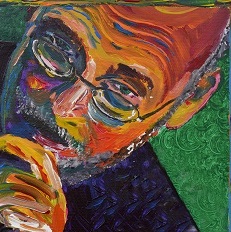Fighting the Speckled Monster
Vaccination has been an issue for a very long time.
It was a cold rainy morning in Gloucestershire and Joseph Merret was exhausted. He was tired of work, tired of cows, and especially tired of horses. He was supposed to be a gardener, not a muck shoveler, and especially not a milkmaid. But the groomsman and several of the stable hands were off at some kind of steeplechase event, and he had been left to clean the stable and brush the horses. Several of the horses had stayed behind because they were limping, and he had been told to rub a salve along their heels. He thought the problem might be hoof canker, but he wasn't sure. All he knew was that the poultice smelled terrible, and if the animals did not get better he would be to blame. The Earl of Berkeley was not the greatest of employers, but working for him was far better than fighting against the independence of the distant American colonies.

Horses, especially ones with sore legs, tended to kick. He generally had less trouble with the milk cows. The milkmaids seemed to get sick not infrequently and then he would be stuck with the task. It did give him an opportunity to drink fresh warm milk. But today the cows seemed restless and warm to the touch, and he noticed strange small blisters and ulcerations on their udders. However, the milk flowed easily, so soon he was done and on to his own chores.
A week later, he was the one who was ill, with fever, swollen glands, and a painful rash.
Twenty years later, in 1796, Sarah Nelmes, a milkmaid from Gloucestershire, lay in bed, feeling similarly weak and sweaty. She had odd swellings beneath her arms, and a rash had developed on her arm, with blueish eruptions that were starting to blister. She had seen the same lesions on the cows' udders and the stableboys' hands. She felt ill, but she was happy. She knew she had contracted cowpox and forever would be free of the more dreaded disease: the Speckled Monster, smallpox, which killed so many people and disfigured the ones who lived. She sipped some willow bark tea and tried to rest until the illness passed. A bit later, a knock on the door disturbed her sleep. It was the local doctor, and he had a strange request.
Edward Jenner had been 24 years old when he returned to his home town of Berkeley. He had trained with the great surgeon John Hunter for two years and was educated as both a physician and a naturalist. Smallpox was a significant cause of morbidity and mortality in England and was especially deadly in infants. Lady Mary Wortley Montagu, who herself had been scarred by smallpox, had brought the practice of smallpox variolation to England. This entailed the selective exposure of healthy patients (at first, prisoners and orphaned children) to infected smallpox material. It showed a reduction in mortality but still represented a significant risk: 2% to 3% of variolated patients died of smallpox, and they risked contracting other diseases with the procedure, such as tuberculosis or syphilis.
Jenner had heard rumors that milkmaids who had contracted cowpox were free of smallpox, so he went to Sarah Nelmes and scraped the purulent material from the lesions on her hands. If he could just induce cowpox in healthy patients, he could test to see if they would be protected from the more severe disease. Based on its bovine origin, and the Latin term for cow, vacca, he called it the process vaccination. In his 1798 work “An Inquiry into the Causes and Effects of the Variolae Vaccinae, known by the name of Cow-Pox,” he described his experiments. His first case was Joseph Merret, who had contracted cowpox 25 years earlier. Merret was variolated with smallpox, along with his entire family. His children contracted smallpox, as expected after variolation, and all lived, although one was very ill. Despite repeated attempts at smallpox variolation, Merret never contracted the disease. Jenner also attempted to induce cowpox in an 8-year-old boy, James Phipps, and succeeded in giving him the lesser disease. Phipps too did not contract smallpox despite repeated exposure to it.
Jenner went on to vaccinate and promote the concept. He built a small hut in his yard where he would do this for free and called it the Temple of Vaccinia. Obtaining enough vaccine was not easy, but soon samples made their way to Massachusetts, where Thomas Jefferson was vaccinated and promoted the procedure.
Not everyone thought vaccination was a valuable treatment. There was an anti-vaccination movement, and rumors circulated about the procedure's dangers. A famous print by the caricaturist James Gillray ridicules the anti-vaccinationists, depicting Jenner forcing treatment on unwilling recipients and cows' heads springing forth from their bodies.
Today, the Speckled Monster has been eradicated but could still return in a weaponized form. Despite two centuries of experience, vaccinophobia also remains a problem in the modern age, as seen with recent measles outbreaks. But fear of autism from vaccines, springing from a flawed paper, is no different than the fear of a bovine emerging from one's shoulder.



